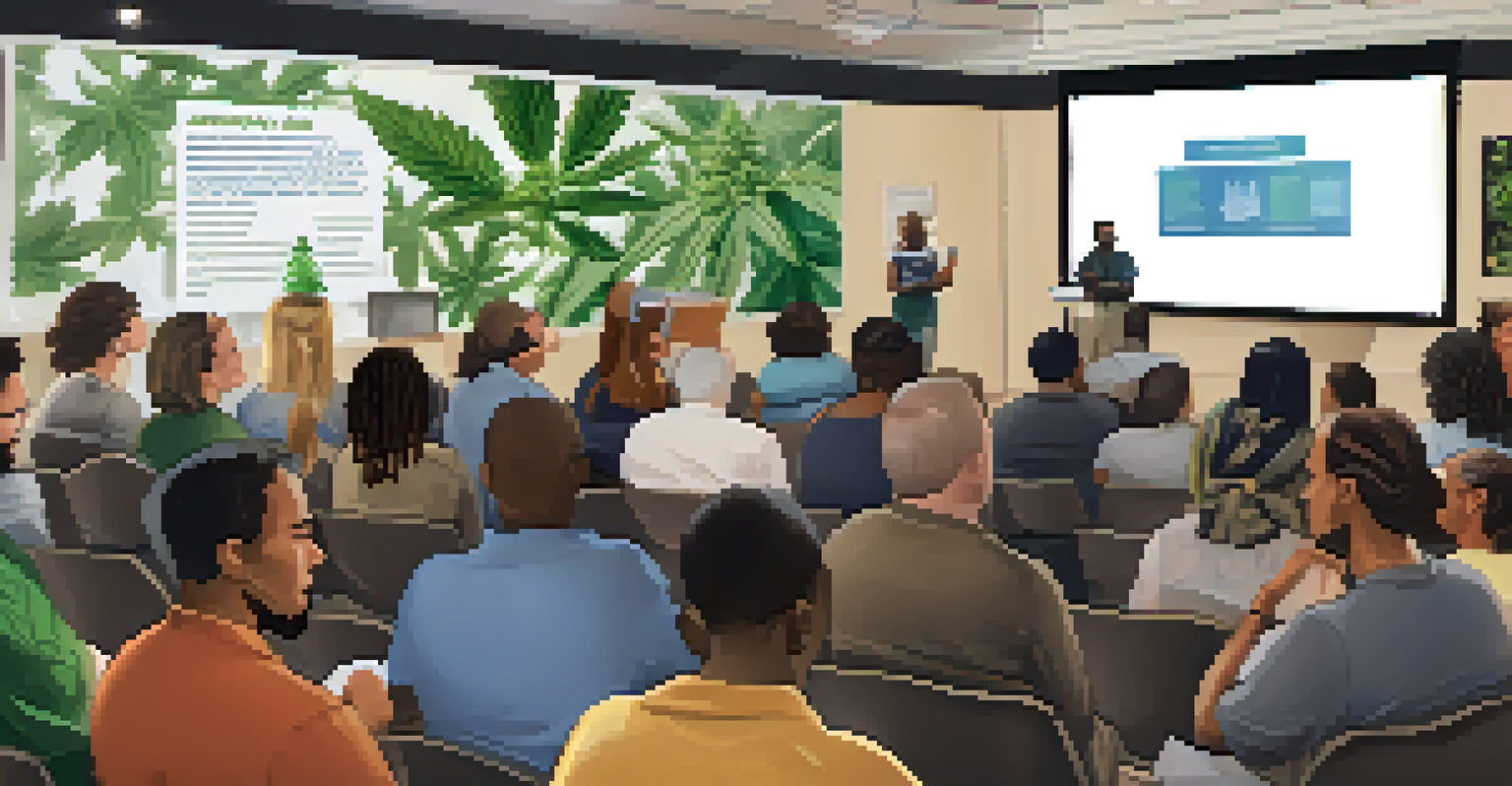Racial Disparities in Medical Marijuana Prescription Rates

Understanding Medical Marijuana and Its Benefits
Medical marijuana has gained recognition for its therapeutic properties, helping with conditions like chronic pain, anxiety, and nausea. This form of treatment is becoming increasingly popular as more states legalize it. However, understanding its benefits is just the beginning; factors such as access and prescription rates reveal deeper issues.
The greatest wealth is health.
For many patients, medical marijuana offers an alternative to traditional pharmaceuticals, which can come with a laundry list of side effects. It’s particularly pivotal for underserved communities who often face barriers to healthcare. The potential for relief is promising, but the reality of access often paints a different picture.
As we explore the prescription landscape, it becomes clear that not everyone is benefiting equally from these medical advancements. Disparities in prescription rates can highlight systemic issues within healthcare that warrant closer examination.
Examining Racial Disparities in Access
Despite the increasing acceptance of medical marijuana, racial minorities often face significant hurdles in accessing these treatments. Studies indicate that Black and Hispanic individuals are less likely to receive prescriptions compared to their white counterparts. This disparity raises questions about equity in healthcare delivery.

Barriers such as socioeconomic status, stigmatization, and lack of education around medical marijuana contribute to these disparities. Many individuals from marginalized communities may lack the resources to navigate the complex healthcare system or face discrimination when seeking treatment. These challenges can deter them from pursuing medical marijuana as an option.
Access Disparities in Treatment
Racial minorities face significant hurdles in accessing medical marijuana, leading to unequal healthcare outcomes.
Furthermore, cultural attitudes toward marijuana use may differ across communities, influencing perceptions and acceptance. Understanding these nuances is crucial in addressing the gaps and ensuring that everyone can access the care they need.
The Role of Healthcare Providers
Healthcare providers play a pivotal role in prescribing medical marijuana, yet their biases can impact patient access. Studies show that some providers may hold preconceived notions about certain racial groups, which can affect their willingness to prescribe medical marijuana. This can lead to unequal treatment and contributed to disparities in prescription rates.
Injustice anywhere is a threat to justice everywhere.
Additionally, a lack of training and knowledge about medical marijuana among providers can further exacerbate these issues. If healthcare professionals aren't equipped to discuss or recommend medical marijuana, patients miss out on potential treatment options. This gap in education needs addressing to empower providers to make informed decisions.
Moreover, fostering open communication between patients and providers is essential. Building trust can encourage more patients to discuss alternative treatments, including medical marijuana, without fear of judgment or stigma.
Regulatory Barriers and Their Impact
Regulations surrounding medical marijuana vary significantly from state to state, and these differences can disproportionately affect racial minorities. In some areas, convoluted application processes or stringent qualifying conditions may hinder access. This uneven regulatory landscape can create a patchwork of barriers that complicate access for those who need it most.
For instance, some states require extensive documentation or proof of residency, which can be challenging for transient populations or those facing financial difficulties. Additionally, the cost of consultations and medical cards can be prohibitive for lower-income individuals. As a result, these regulatory barriers can perpetuate existing health disparities.
Provider Bias Affects Prescriptions
Healthcare providers' biases and lack of training can result in unequal treatment and prescription rates for medical marijuana.
Addressing these issues requires not only policy changes but also community engagement to ensure that regulations serve all populations equitably. Advocating for more inclusive policies can help dismantle these barriers and pave the way for broader access.
The Importance of Advocacy and Education
Advocacy plays a crucial role in addressing racial disparities in medical marijuana access. Various organizations are working to raise awareness about these issues and push for policy changes that promote equity. By highlighting the experiences of marginalized communities, advocates can drive change and foster a more inclusive approach to healthcare.
Education is another vital component in this effort. Increasing awareness about the benefits and legality of medical marijuana can empower individuals to seek treatment. Educational initiatives can also help dispel myths and stigma surrounding marijuana use, encouraging more patients to consider it as a viable option.
Ultimately, a collaborative effort between advocates, healthcare providers, and communities is necessary to create a more equitable system. By working together, we can ensure that everyone has access to the healthcare they deserve.
Case Studies: Real-Life Impacts of Disparities
Examining case studies can provide insight into the real-life implications of racial disparities in medical marijuana access. For instance, one study revealed that Black patients were significantly less likely to have their medical marijuana applications approved compared to white patients. This discrepancy highlights the urgent need for reforms in the prescription process.
Another example includes the experiences of patients from low-income backgrounds who face additional barriers, such as transportation and costs. These challenges can result in missed opportunities for effective treatment, further exacerbating health inequalities. Understanding these real-world impacts helps to illustrate the urgency of addressing the disparities.
Need for Advocacy and Education
Advocacy and education are crucial in addressing racial disparities and promoting equitable access to medical marijuana.
These case studies serve as powerful reminders of the work that still needs to be done. By amplifying these voices and sharing their stories, we can foster a deeper understanding of the issues and drive meaningful change.
Moving Toward Equity in Medical Marijuana Access
To achieve equity in medical marijuana access, a multifaceted approach is essential. This includes revising regulations to reduce barriers, enhancing education for both patients and providers, and prioritizing advocacy efforts. By addressing these areas, we can create a more inclusive healthcare environment that benefits everyone.
Collaboration among policymakers, healthcare providers, and community organizations is critical in this process. Engaging with affected communities can help ensure that their voices are heard and their needs are met. By working together, we can develop strategies that effectively address disparities.

Ultimately, the goal is to create a healthcare system where all individuals, regardless of their race or background, have equal access to the benefits of medical marijuana. Achieving this vision will require commitment, compassion, and a shared determination to promote health equity.